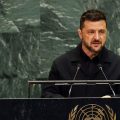
A powerful 8.8 magnitude earthquake struck the Russian Far East early Wednesday morning, sending tsunami waves rippling across the Pacific Ocean. Hawaii was placed under a tsunami warning, with the first wave arriving as predicted around 7:17 p.m. local time. While the initial wave was relatively small, measuring approximately four feet in Kahului, Maui, the potential for larger waves and subsequent surges remained a concern. Authorities urged residents to evacuate to higher ground, and shelters were opened across the islands.
The impact was felt far beyond Hawaii. Japan experienced tsunami waves, with footage showing white waves reaching the shorelines of Hokkaido, Ibaraki, and Chiba. Waves of varying heights were reported, ranging from less than a foot in some areas to two feet in others. Alaska also experienced minor tsunami activity, with waves less than a foot recorded in Amchitka and Adak. The tsunami warning was not limited to Hawaii and Japan, extending to other Pacific Rim nations including the Philippines, Mexico, and New Zealand, where authorities issued warnings and advisories urging people to stay clear of coastal areas.
In Hawaii, Governor Josh Green reported that data from Midway Atoll indicated waves measuring six feet from peak to trough. He emphasized that while the initial waves appeared relatively small, the force of such a tsunami could still pose significant danger, potentially moving cars, uprooting trees, and causing significant damage. He stressed the importance of staying away from the coast and following evacuation orders. The situation prompted significant traffic congestion in Honolulu as residents heeded warnings and evacuated inland.
Across the Pacific, the effects were varied. Ports in the Kamchatka Peninsula, near the earthquake’s epicenter, experienced flooding. In Japan, transportation was disrupted, with ferries suspended and some train operations delayed. Sendai airport temporarily closed its runway. While there were reports of damage to buildings and infrastructure in some areas, notably in Kamchatka, and reports of some injuries, initial reports from across the impacted regions indicated no major widespread damage or loss of life. This is not to diminish the real and ongoing threat of subsequent waves and the need for continued vigilance.
Experts emphasized that a tsunami is not a single wave but a series of waves that can continue for hours, or even more than a day. The initial waves may be small, but the prolonged nature of the event necessitates caution and adherence to safety guidelines. Several countries issued advisories and warnings to remain clear of coastal areas until the threat had passed. The earthquake itself was one of the strongest recorded in recent years, surpassed only by a handful of events in global history, highlighting the immense power of nature and the importance of preparedness.
The situation underscores the importance of tsunami preparedness and the need to heed official warnings. While this event’s impact was less severe than initially feared, the potential for significant damage and casualties remained real. The quick response of authorities and the cooperation of the public undoubtedly contributed to minimizing the overall impact.










